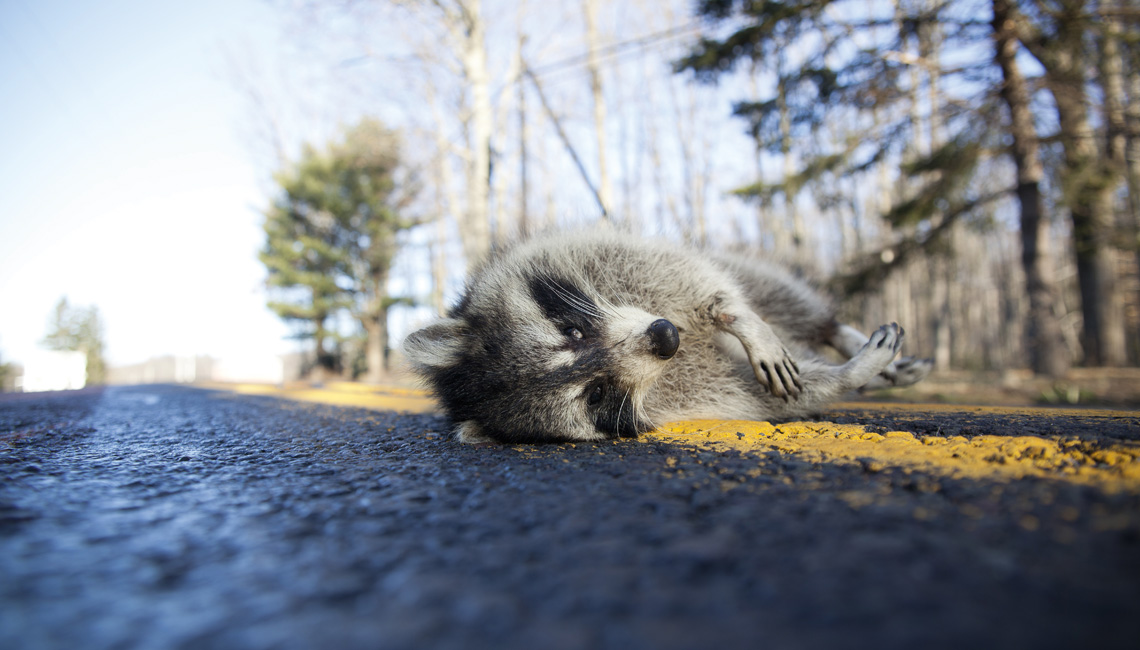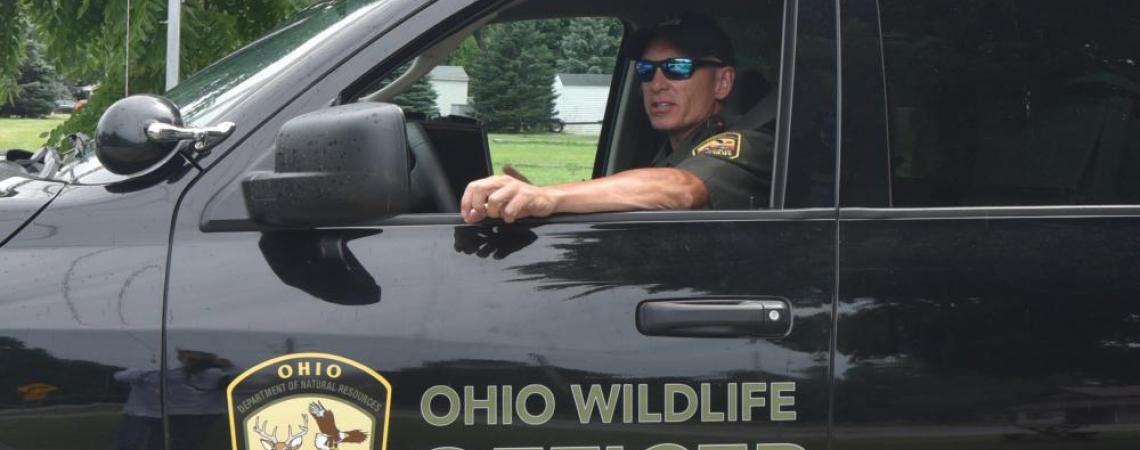Mostly in life, possums, skunks, groundhogs, and racoons don’t get much respect. That’s especially so for the ones who spend their last earthly moments on Ohio roadways, just before they get hit.
To at least one person in Ohio, however, they’re forever immortalized, even if it’s just as a number.
Wildlife Officer Reid Van Cleve is a veteran of the survey.
Katie Dennison is a research biologist for the Ohio Department of Natural Resources’ Division of Wildlife. At the Olentangy Research Station in Columbus, she oversees the annual Furbearer Roadkill Survey. And yes, that’s the official name.

“There are 50 different routes, 40 miles long,” Dennison says. “We drive them three times a month in March and April, so they get covered a total of six times each.”
Every year the routes are driven by wildlife officers or DOW staff like Katie. As the name suggests, they count the roadkill. And for what possible earthly reason?
“All four are native species and they’re game animals in Ohio. As a part of our mission, we monitor all our game species to keep track of their population trajectories,” she says. “It was established in 1979, so it’s been going on for a long time.”
Dennison says it’s usually fairly easy to identify a carcass on or near the road, though if it isn’t, surveyors must stop and get a closer look.
“We get funny looks occasionally,” she says, laughing. “People will sometimes stop and want to know what you’re doing or what you’re looking for.”
It’s often wildlife officers like Michele Butler charged with the surveys. Butler, assigned to Erie County, recently spent a couple hours driving a route that meandered through Sandusky and Ottawa counties. At one point, she slowed to a crawl for something unidentifiable, but then shook her head, punched the accelerator, and continued on. It was just a clump of muddy turf.
Speaking of precipitation, wildlife officers say surveys in the rain can be a little tricky because everything gets matted down and harder to identify on the fly.
“Sometimes you see something and you don’t know if it’s a racoon that’s been hit 20 times or if it’s dirt or something else,” she chuckles. “There’s definitely more exciting things we could be doing. But this is important data for our biologists like Katie. And plus, I’d much rather be outside than in an office or a lab.”
Butler says she never seems to find anything too exciting — but sometimes other people do.
To supplement the survey that tracks the four furbearing animals, Ohio bowhunters are asked to take part in a voluntary survey each hunting season — about 3,300 sent in data last year. The hunters are asked to keep an eye out for the four species while in the woods. As an example, a recent survey from bowhunters accounting for about 108,000 hours in the woods offered up numbers on the species, plus a few bonus sightings of black bears, fishers, and other notable creatures.
Dennison says the bowhunters aren’t hunting for the species, they’re just recording how many hours they were in the woods and what they saw — which is an important supplement to the information collected from the roads.
“They’re abundant species — we just use the information from both sources to keep tabs on them and make sure that no large, unaccounted changes take place,” she says.
Surveyors driving the routes are also asked to report anything unusual and when possible, to collect the carcass for a necropsy to determine age, sex, health, reproductive status, etc.
“Badgers are one of those we ask them to collect,” Dennison says. “And gray fox also.”
While porcupines have been sighted in Ohio near the Pennsylvania border, none have been found on the road during the survey. Some armadillos have showed up — though Dennison discounts them as hitchhikers because they were found hundreds of miles from their nearest territory near an interstate in northern Ohio.
Another species Dennison wants to know about are bobcats, which have made a comeback in Ohio and so are seen frequently by officers — both alive and on the road.
Dennison said the bowhunter survey data usually correlates with the roadkill survey data.
“For the most part, they’re pretty much in line,” she says. “The possum was one where we’ve seen a declining trend going back to the early ’90s. And on bowhunter and roadkill surveys, skunks declined through the ’90s and early 2000s, but have been stable for about a decade.”
Banner years both population- and roadkill-wise for groundhogs, possums, raccoons, and skunks? 1989, 1991, 2000, and 1996, respectively. And apparently time and experience does not teach any of the four animals to better cross roads since the total number hit versus number-per-mile remains a steady ratio throughout the survey history.
When asked about turtles (which aren’t on the survey), Dennison made it clear she’s no expert. But she does have some advice because — let’s face it — who among us has not stopped to help a turtle cross the road?
“If you can stop safely,” she says, emphasizing the “safely” part, “always move them in the same direction they were heading — otherwise they’ll just turn back around and head back across the road.”










